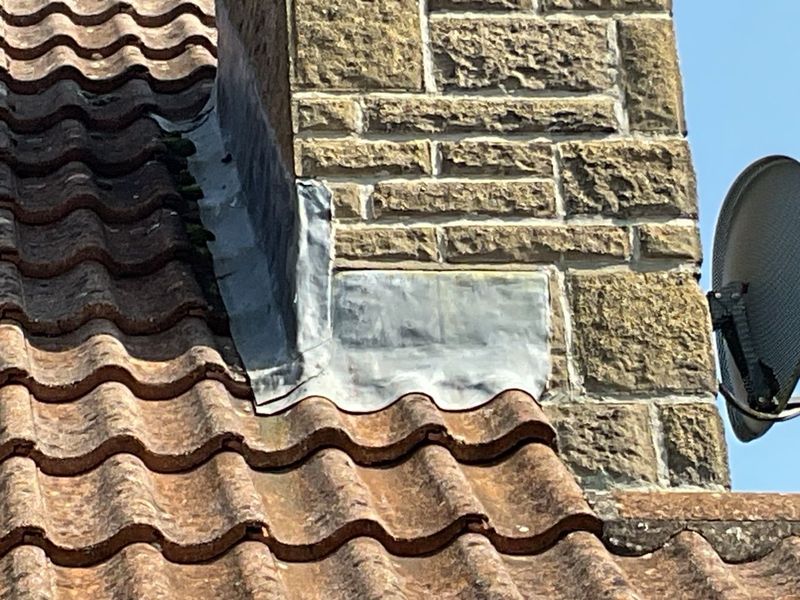Roof Health in the South West: A Surveyor’s Essential Guide

Introduction:
The roof is a crucial component of any building, acting as the primary shield against the elements. In the South West, with its notoriously variable weather conditions, roof health is particularly important. From the relentless coastal winds that batter exposed properties to the heavy, persistent rains that saturate the region, roofs in this area face a unique set of challenges. The strong, salt-laden winds can accelerate the deterioration of roofing materials, while the frequent downpours can exploit even the smallest weaknesses, leading to leaks and structural damage. Understanding these regional factors is essential for maintaining a healthy and resilient roof.
Common Roof Problems:
Roofs in the South West are susceptible to a range of common problems. Damaged tiles, whether cracked, slipped, or missing, are a frequent issue, often caused by wind, frost, or general wear and tear. Deteriorated and cracked ridge and hip tile mortar beds, and joints caused by common movement within structures, as well as deteriorated and cracked/dislodged sections of roof eaves mortar fillets are all areas for easy water ingress, as well as cracked mortar flashing’s, the material used to seal joints between the roof and other structures like chimneys or walls, is another common concern. When flashing deteriorates, water can penetrate the building, leading to damp and rot. Rotten timbers, particularly in older properties, can compromise the structural integrity of the roof, posing a significant safety risk.
Moss and lichen, while seemingly harmless, can also cause significant damage. These organisms retain moisture, which can lead to the degradation of roofing materials, especially tiles and slates. The trapped moisture can also freeze and expand during colder months, further exacerbating the damage. Additionally, the build-up of moss and lichen can obstruct drainage channels, leading to water pooling and potential leaks.
Surveying Roofs:
Building surveyors employ a variety of methods to inspect roofs thoroughly. A visual inspection from ground level is the first step, allowing us to identify obvious signs of damage. However, for a more detailed assessment, we often use drone surveys. Drones provide high-resolution images and videos, enabling us to examine hard-to-reach areas safely and efficiently.
During a roof survey, we assess the condition of all roofing materials, including tiles, slates, ridge tile mortar beds and joints and flashing’s. We check for signs of damage, such as cracks, chips, and deterioration. We also examine the structural integrity of the roof, looking for signs of sagging, rot, or other issues. Special attention is paid to lead work, as this material is prone to movement, corrosion and damage. Chimney stacks are also thoroughly inspected for cracked materials, un-pointed brickwork, and damaged flaunching’s. The flaunching is the mortar that secures the chimney pots to the stack. Open chimney pots are a common flaw, leaving a large opening within the chimney stack for vertical rain penetration, thereafter causing water ingress throughout the chimney stack and breast throughout the property.
Internal Roof Inspection:
An internal inspection of the roof space is equally crucial for a comprehensive assessment. This allows us to examine the underside of the roof structure, revealing issues that may not be visible from the outside. We check for signs of water damage, such as staining or damp patches on the timbers or insulation. We also look for evidence of rot, insect infestation, or structural defects in the rafters, purlins, and other structural components. Proper ventilation is also assessed, as inadequate ventilation can lead to condensation and rot. We examine the condition of the insulation, ensuring it is properly installed and providing adequate thermal performance, as well as instances where excessive levels of insulation are used causing heightened levels of condensation in the roof space. Finally, we assess the condition of any chimneys or flues that pass through the roof space, incomplete fire seals around the flue seals, blocked off redundant chimney stacks missing low and high level air vents for ventilation purposes, or damage.
Maintenance and Repairs:
Regular maintenance is crucial for maintaining roof health. We recommend conducting annual inspections, especially after periods of severe weather. Prompt repairs are essential to prevent minor issues from escalating into major problems. When repairs are necessary, it is vital to use qualified roofing contractors. They possess the expertise and experience to carry out repairs to a high standard, ensuring the longevity of your roof.
Good guttering is also essential for roof health. Gutters and downpipes should be kept clear of debris to ensure proper drainage. Blocked and incorrect falls across guttering can lead to water overflowing and damaging the roof, walls, and foundations of the property. Regular cleaning and maintenance of guttering can prevent costly repairs in the future.
The Importance of Professional Surveys:
A professional building survey is essential for accurately assessing the condition of your roof and identifying potential issues. At Dundas Building Surveying, our team of experienced surveyors possessing the local knowledge and expertise to conduct thorough roof surveys throughout the South West. We provide detailed reports that inform our clients about the condition of their roof, empowering them to make informed decisions. Our surveys help identify potential problems early, allowing for timely repairs and preventing costly damage. Contact us today for a comprehensive building survey and ensure the long-term health and resilience of your roof.
Search
Recent Posts
Let's Have a Chat
Looking for professional homebuyer and building surveys? Contact Dundas today!